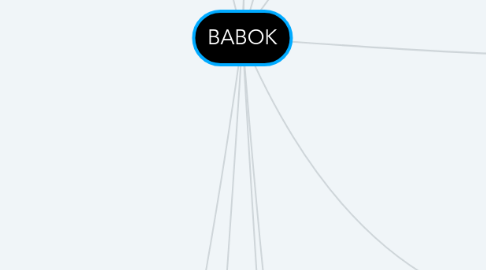
1. 9. Underlying Competencies
1.1. 9.1 Analytical Thinking and Problem Solving
1.1.1. Creative Thinking
1.1.2. Decision Making
1.1.3. Learning
1.1.4. Problem Solving
1.1.5. Systems Thinking
1.1.6. Conceptual Thinking
1.1.7. Visual Thinking
1.2. 9.2 Behavioral Characteristics
1.2.1. Ethics
1.2.2. Personal Accountability
1.2.3. Trustworthiness
1.2.4. Organization and Time Management
1.2.5. Adaptability
1.3. 9.3 Business Knowledge
1.3.1. Business Acumen
1.3.2. Industry Knowledge
1.3.3. Organization Knowledge
1.3.4. Methodology Knowledge
1.4. 9.4 Communication Skills
1.4.1. Verbal Communication
1.4.2. Non-Verbal Communication
1.4.3. Written Communication
1.4.4. Listening
1.5. 9.5 Interaction Skills
1.5.1. Facilitation
1.5.2. Leadership and Influencing
1.5.3. Teamwork
1.5.4. Negotiation and Conflicts Resolution
1.5.5. Teaching
1.6. 9.6 Tools and Technology
1.6.1. Office Productivity Tools and Technology
1.6.2. Business Analysis Tools and Technology
1.6.3. Communication Tools and Technology
2. 10. Techniques
2.1. 10.1 Acceptance and Evaluation Criteria
2.2. 10.2 Backlog Management
2.3. 10.3 Balanced Scorecard
2.4. 10.4 Benchmarking and Market Analysis
2.5. 10.5 Brainstorming
2.6. 10.6 Business Capability Analysis
2.7. 10.7 Business Cases
2.8. 10.8 Business Model Canvas
2.9. 10.9 Business Rules Analysis
2.10. 10.10 Collaborative Games
2.11. 10.11 Concept Modelling
2.12. 10.12 Data Dictionary
2.13. 10.13 Data Flow Diagrams
2.14. 10.14 Data Mining
2.15. 10.15 Data Modelling
2.16. 10.16 Decision Analysis
2.17. 10.17 Decision Modeling
2.18. 10.18 Document Analysis
2.19. 10.19 Estimation
2.20. 10.20 Financial Analysis
2.21. 10.21 Focus Groups
2.22. 10.22 Functional Decompostition
2.23. 10.23 Glossary
2.24. 10.24 Interface Analysis
2.25. 10.25 Interviews
2.26. 10.26 Item Tracking
2.27. 10.27 Lessons Learned
2.28. 10.28 Matrix and Key Performance Indicators
2.29. 10.29 Mind Mapping
2.30. 10.30 Non-Functional Requirement Analysis
2.31. 10.31 Observation
2.32. 10.32 Organizational Modelling
2.33. 10.33 Prioritization
2.34. 10.34 Process Analysis
2.35. 10.35 Process Modelling
2.36. 10.36 Prototyping
2.37. 10.37 Reviews
2.38. 10.38 Risk Analysis and Management
2.39. 10.39 Roles and Permissions Matrix
2.40. 10.40 Route Cause Analysis
2.41. 10.41 Scope Modelling
2.42. 10.42 Sequence Diagrams
2.43. 10.43 Stakeholder List, Map or Personas
2.44. 10.44 State Modelling
2.45. 10.45 Survey or Questionnaire
2.46. 10.46 SWOT Analysis
2.47. 10.47 Use Cases or Scenarios
2.48. 10.48 User Stories
2.49. 10.49 Vendor Assessment
2.50. 10.50 Workshops
3. 11. Perspectives
3.1. 11.1 The Agile Perspective
3.2. 11.2 The Business Intelligence Perspective
3.3. 11.3 The Information Technology Perspective
3.4. 11.4 The Business Architecture Perspective
3.5. 11.5 The Business Process Management Perspective
4. 1. Introduction
4.1. 1.1 Purpose of the BABOK Guide
4.2. 1.2 What is a Business Analysis
4.3. 1.3 Who is a Business Analyst
4.4. 1.4 Structure of the BABOK Guide
5. 2. Business Analysis Key Concepts
5.1. 2.1 The Business Analysis Core Concept Model
5.1.1. Change
5.1.2. Need
5.1.3. Solution
5.1.4. Stakeholder
5.1.5. Value
5.1.6. Context
5.2. 2.2 Key Terms
5.2.1. Business Analysis
5.2.2. Business Analysis Information
5.2.3. Design
5.2.4. Enterprise
5.2.5. Organization
5.2.6. Plan
5.2.7. Requirements
5.2.8. Risk
5.3. 2.3 Requirements Classification Schema
5.3.1. Business Requirements
5.3.2. Stakeholder Requirements
5.3.3. Solution Requirements
5.3.4. Transition Requirements
5.4. 2.4 Stakeholders
5.4.1. Business Analyst
5.4.2. Customer
5.4.3. Domain Subject Matter Expert
5.4.4. End User
5.4.5. Implementation Subject Matter Expert
5.4.6. Operational Support
5.4.7. Project Manager
5.4.8. Regulator
5.4.9. Sponsor
5.4.10. Supplier
5.4.11. Tester
5.5. 2.5 Requirements and Designs
6. 3. Business Analysis Planning and Monitoring
6.1. 3.1 Plan Business Analysis Approach
6.2. 3.2 Plan Stakeholder Engagements
6.3. 3.3. Plan Business Analysis Governance
6.4. 3.4 Plan Business Analysis Information Management
6.5. 3.5 Identify Business Analysis Performance Improvements
7. 5. Requirements Life Cycle Management
7.1. 5.1 Trace Requirements
7.2. 5.2 Maintain Requirements
7.3. 5.3 Prioritize Requirements
7.4. 5.4 Assess Requirements Changes
7.5. 5.5 Approve Requirements
8. 7. Requirements Analysis and Design Definition
8.1. 7.1 Specify and Model Requirements
8.1.1. 7.1 Specify and Model Requirements
